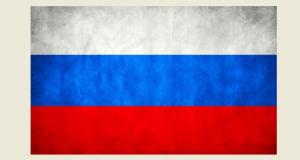Having a memory of past situations permits us to just take smarter conclusions in regards to the future
The capacity to retailer and recover advice gives an organism a clear edge when hunting for food stuff or keeping away from damaging environments. Usually it has been attributed to organisms that have a nervous program.A fresh examine authored by Mirna Kramar (MPI-DS) and Prof. Karen Alim (TUM and MPI-DS) troubles this perspective by uncovering the astonishing qualities of the very highly dynamic, single-celled organism to store and retrieve information and facts about its atmosphere.
The slime mold Physarum polycephalum may be puzzling scientists for most many years. Current on the crossroads somewhere between the kingdoms of animals, crops and fungi, this special organism provides perception into the early evolutionary record of eukaryotes — to which also humans belong.Its whole body is usually a big solitary cell built up of interconnected tubes that form intricate networks. This single amoeba-like mobile may perhaps extend a few centimeters or maybe even meters, that includes as being the premier cell on the planet on the Guinness E-book of Planet Records.The putting abilities in the slime mold to unravel challenging dilemmas, just like discovering the shortest route via a maze, attained it the attribute “intelligent.” It intrigued the analysis group and kindled inquiries about final decision making over the most basic amounts of everyday life.The decision-making competence of Physarum is especially intriguing on condition that its tubular network continually undergoes fast reorganization — increasing and disintegrating its tubes — while totally missing an organizing middle.
The researchers identified which the organism weaves memories of meal encounters specifically to the architecture of the network-like entire body and makes teaching plan nursing template use of the saved advice when building long run selections.”It is incredibly enjoyable each time a assignment develops from a basic experimental observation,” says Karen Alim, head within the Biological Physics and Morphogenesis group for the MPI-DS and professor on Idea of Organic Networks at the Complex College of Munich.In the event the researchers adopted the migration and feeding method for the organism and observed a distinct imprint of a meal source to the pattern of thicker and thinner tubes in the community extended subsequent to feeding.
“Given P. polycephalum’s exceptionally dynamic community reorganization, the persistence of this imprint sparked the concept the network architecture alone could serve as memory belonging to the earlier,” says Karen Alim. On the other hand, they 1st needed to describe the system guiding the imprint formation.For this goal the scientists merged microscopic observations within the adaption on the tubular community with theoretical modeling. An encounter with meals triggers the discharge of a chemical that travels within the place where food items was uncovered all over the organism and softens the tubes inside network, producing the full organism reorient its migration to the meals.
“The gradual softening is just where the existing imprints of former meals sources occur into engage in and the place info is stored and retrieved,” states 1st author Mirna Kramar. “Past feeding situations are embedded on the hierarchy dnpcapstoneproject com of tube diameters, specifically with the arrangement of thick and skinny tubes while in the community.””For the softening chemical which https://studyabroad.temple.edu/rome is now transported, the thick tubes with the network act as highways in potential customers networks, enabling swift transportation across the total organism,” adds Mirna Kramar. “Previous encounters imprinted with the network architecture as a result weigh to the decision in regards to the long term course of migration.”





